Dear readers,
Over the past 30 years since normalization, Vietnam and the United States have made remarkable progress in line with the aspirations and interests of both peoples, while also contributing to peace, stability, and development in the Asia-Pacific region and beyond.
Bilateral ties have grown significantly, with economics becoming a key pillar. US businesses have invested heavily in Vietnam, and more Vietnamese enterprises are expanding into the US. Today, the US is one of Vietnam’s top trading partners.
However, alongside opportunity comes no small challenge - particularly in tariffs and trade trust between the two nations.
Today’s roundtable discussion is titled: “Three decades of Vietnam - US relations: Partnership and the matter of trade trust.”
Our guests are three veteran diplomats - key figures in shaping and nurturing the bridge between Hanoi and Washington over the past 30 years.
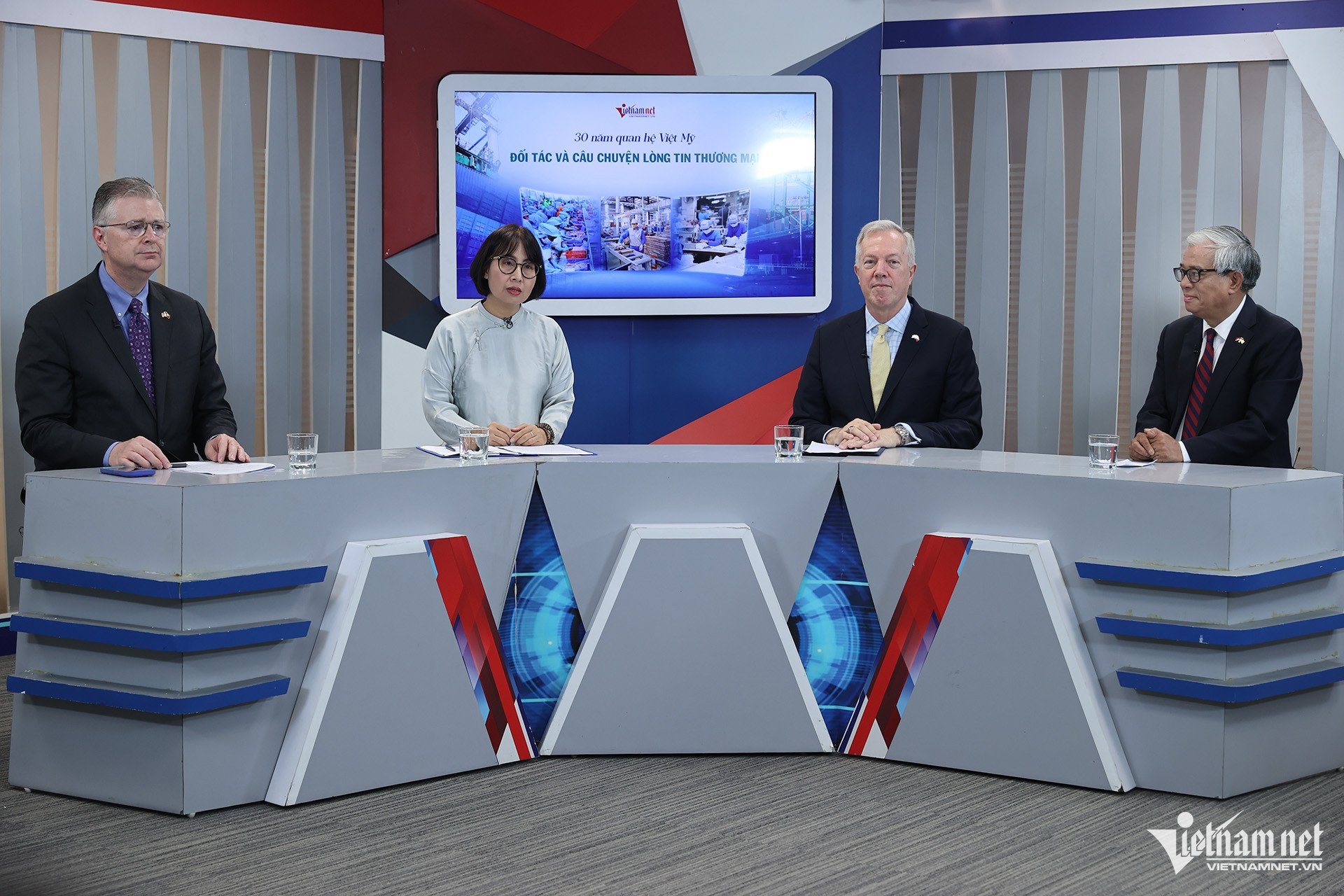
We are honored to introduce:
Ambassador Pham Quang Vinh – Former Deputy Minister of Foreign Affairs in charge of Vietnam’s relations with South Asia, Southeast Asia, and the South Pacific. He served as Vietnam’s Ambassador to the US from 2014. He is currently a Senior Advisor to the Center for Strategic and International Development (CSSD) and the Asia Group.
Former US Ambassador to Vietnam, Daniel Kritenbrink – A career diplomat with extensive experience in Asia, especially in Japan, China, and Vietnam. He recently joined the board of the Asia Group - a strategic advisory firm supporting US and major global companies operating in key markets like Vietnam.
Former US Ambassador to Vietnam, Ted Osius – Currently Senior Vice President and President & CEO for the US-ASEAN Business Council.
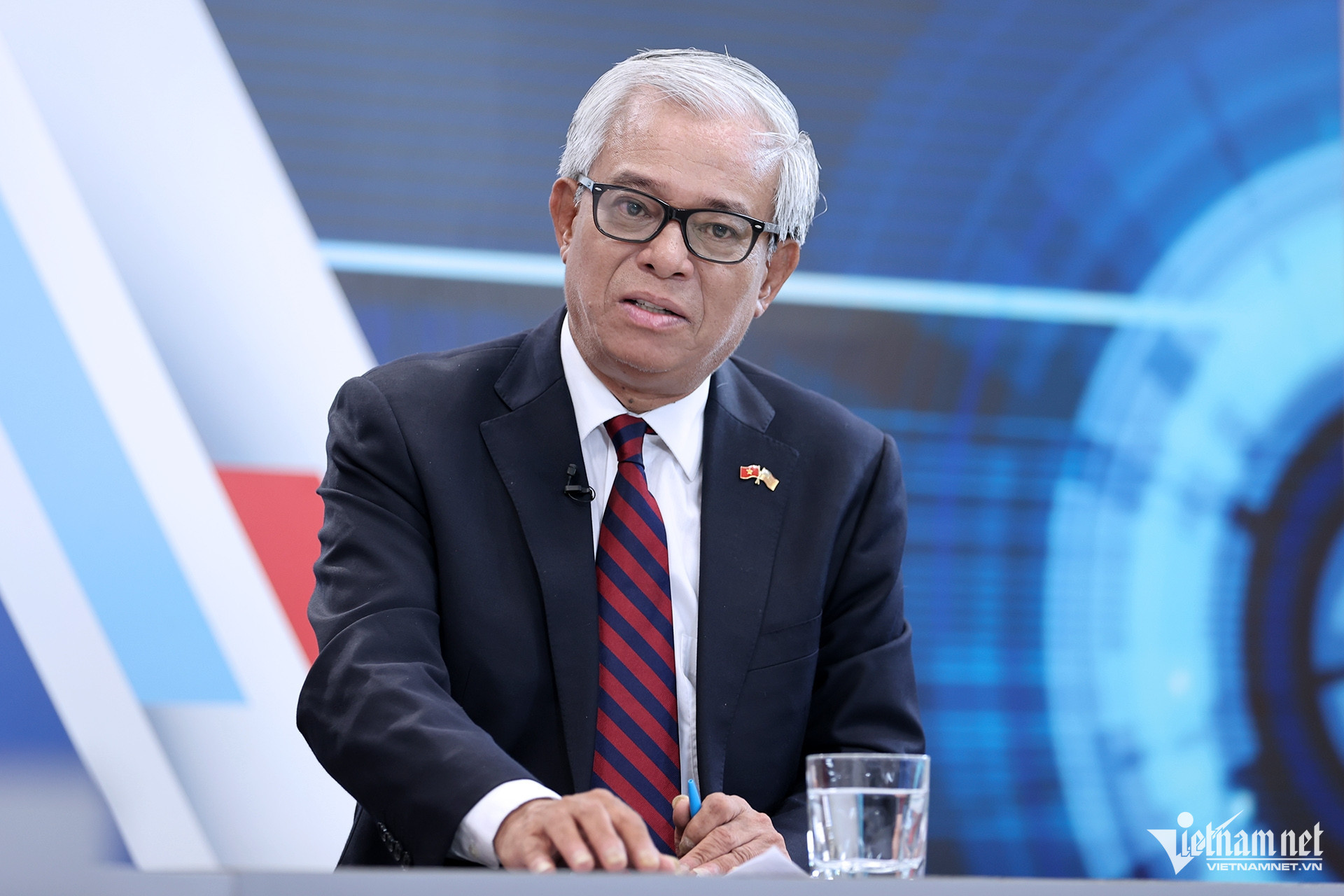
Trust and mutual interest: foundations of trade
After 30 years of normalized and growing relations, in your view, what are the pillars of stability in Vietnam - US trade relations?
Ambassador Pham Quang Vinh: Looking back over the past 30 years, the core, most fundamental pillar in our bilateral relationship, including trade, is trust and the sharing of mutual interests. Despite many ups and downs, the growing alignment of interests and trust-building has propelled the relationship forward, helping it overcome numerous challenges.
The same applies to trade. Agreements such as the Bilateral Trade Agreement in December 2001 and Vietnam’s accession to the WTO in 2007 brought the two sides closer together through shared understanding and trust.
Vietnam’s 30-year journey with the US has paralleled its path of reform and international integration. Vietnam opened up, initiated domestic reforms, expanded its economy, empowered its people, and integrated more deeply into the global system - laying a new foundation for economic and trade cooperation with the US in a more comprehensive and competitive way.
Mutual understanding, trust-building, shared vision, and mutual benefit are the backbone of overall Vietnam - US relations, especially in trade.
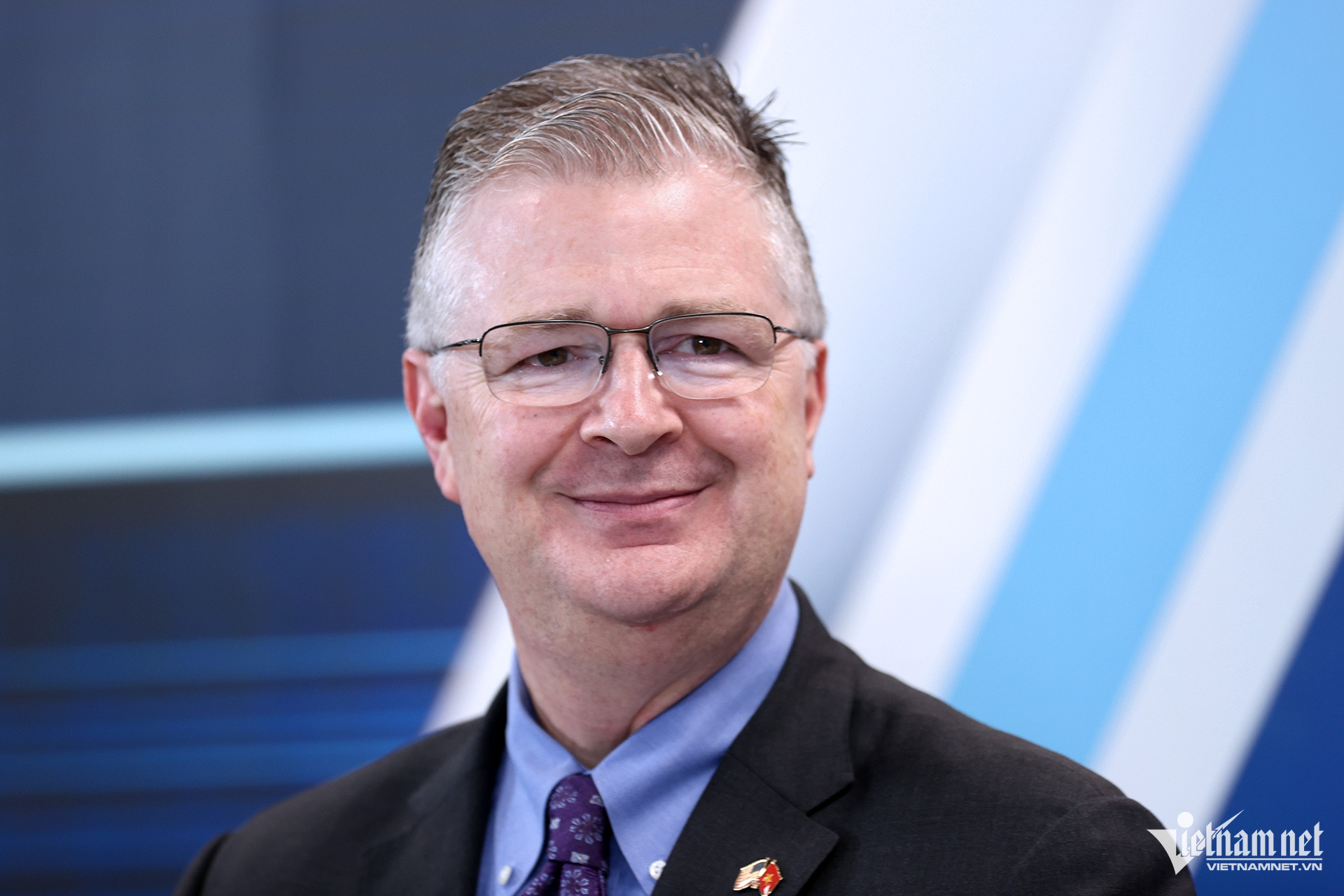
What is your assessment of Vietnam’s role in global supply chains?
Former US Ambassador Daniel Kritenbrink: I believe Vietnam plays an increasingly essential role and is now truly at the heart of global supply chains.
Looking back at Vietnam’s economic development over the past 30 years, it’s no coincidence that its impressive achievements have aligned with the advancement of Vietnam - US bilateral relations.
Vietnam’s international integration policies are directly tied to its Đổi Mới (Renewal) reforms and normalization with the US. I’m proud that trade between the two countries has played a major role in Vietnam’s growth and helped elevate its position in global supply chains.
But credit must go to Vietnam’s leadership and business community, who have done an exceptional job - including attracting foreign investment, much of it from the US. From simple sectors like textiles, agriculture, and aquaculture to strategic and high-tech supply chains such as semiconductors, Vietnam’s achievements are remarkable. That’s why the country now plays such a vital role in the global economy.
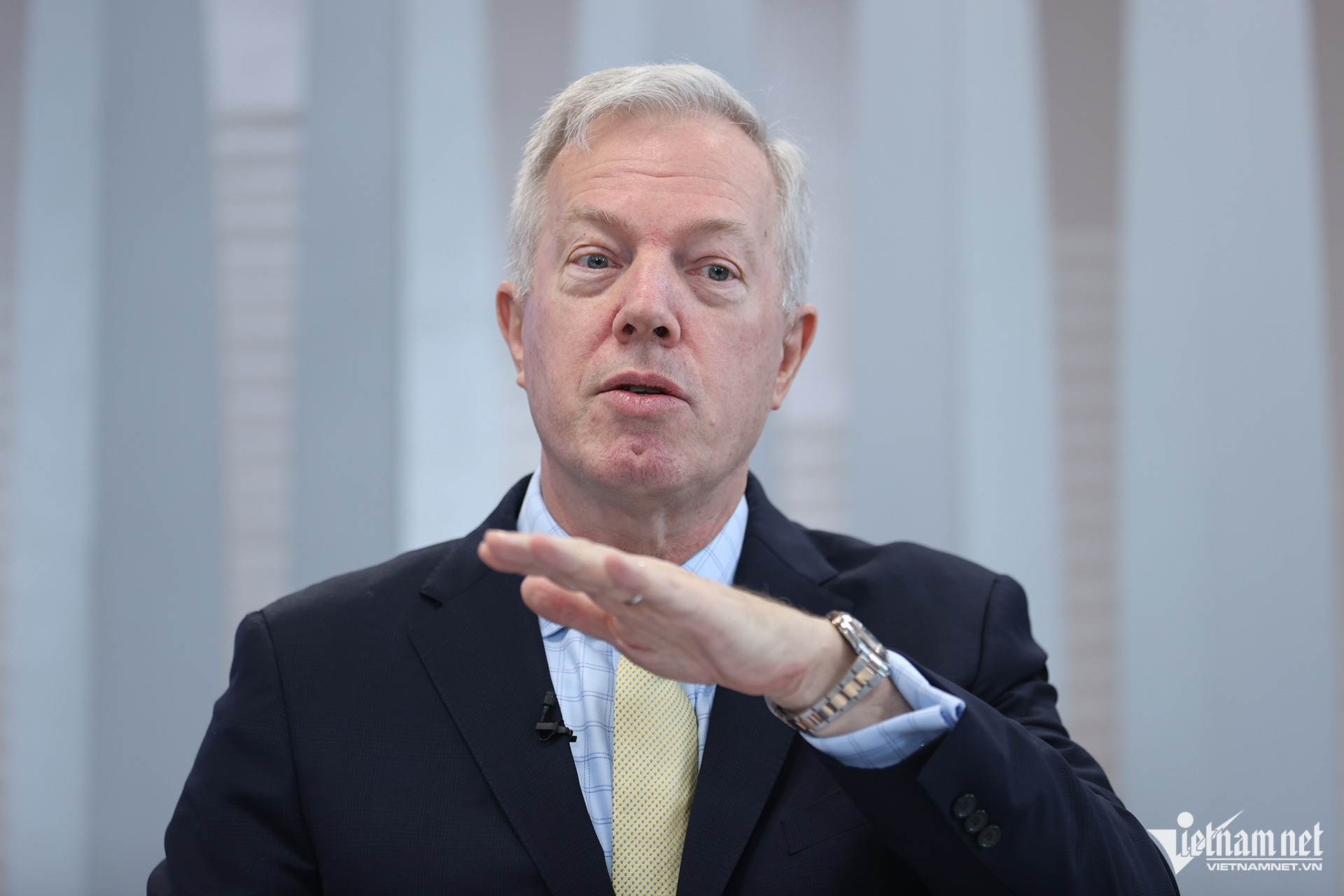
Vietnam: An open government and a hardworking people
Why has Vietnam attracted such keen interest from the US, especially since the COVID-19 pandemic?
Former US Ambassador Ted Osius: First, I agree with both ambassadors. We now represent around 184 of the largest companies operating in Southeast Asia, the majority of which are US firms. Their top area of interest is Vietnam.
Why are they investing so much? As Ambassador Vinh and Ambassador Kritenbrink pointed out, it began in the early 2000s when Vietnam pursued global integration, joined the WTO, and entered the global economy. Economic indicators surged starting in 2008. While post-COVID numbers rose, the real turning point was in 2008 - and that was thanks to smart decisions by the Vietnamese government.
Since then, our 184 companies have recognized Vietnam as a place where the government swiftly removes obstacles and offers business-friendly policies. In reality, investment always follows trade. Investment figures have surged - not just from the US, but from Europe, Japan, and China as well - since around 2008 and continue rising.
In addition to a highly open environment, there’s another critical factor: the Vietnamese people are incredibly hardworking. There may be no people more hardworking. US companies arriving in Vietnam find a motivated workforce whose skills are steadily improving.
I’m proud to say that some of our represented companies directly contribute to this. In a recent US-ASEAN Business Council meeting with Prime Minister Pham Minh Chinh, Intel’s representative shared that they have trained 60,000 Vietnamese workers to an entry-level engineering standard. Many other companies are also improving workforce skills and providing long-term benefits.
Large-scale educational exchanges also play a role, with tens of thousands of Vietnamese students studying in the US. Domestically, companies are supporting workforce development in many ways.
The two sides of tariffs
Looking at the history of bilateral relations, has the US government changed its approach to tariffs on Vietnam?
Ambassador Pham Quang Vinh: Before discussing tariffs, we must first acknowledge that Vietnam - US economic and trade relations have continuously grown - and impressively so.
In 1994-1995, when diplomatic ties began, two-way trade was less than USD 500 million. Today, it’s nearly USD 150 billion. Both countries view each other as key partners. As mentioned by Ambassador Kritenbrink and Ambassador Osius, we are now deeply intertwined in supply chains and interdependent.
Vietnam’s competitiveness, increasing market access, and the rising demand from the US market have made this robust trade possible.
As for tariffs, during my tenure in the US, I witnessed both sides: certain tariffs act as barriers, but they can also push Vietnam to upgrade its standards. Take pangasius (basa) fish, for example. When the US Senate passed a farm bill imposing duties, we engaged with Congress, the administration, and US businesses. Eventually, the US State and Agriculture Departments supported Vietnam - not only at the government level but directly with enterprises - to improve aquaculture practices and meet new standards.
Vietnamese products, including pangasius, were not blocked but continued accessing the US market. So we must view tariffs from two angles: negotiation and opportunity. With technical support from the US, we improved our product quality.
The reciprocal tariffs today are unfamiliar to many - not just in Vietnam but globally. However, what’s clear is that both sides benefit from the relationship. Our economies are complementary.
Vietnam promotes dialogue and seeks negotiated solutions. The current US administration recognizes Vietnam’s proactive and constructive approach. We emphasize fairness, sustainability, and mutual benefit.
Even if reciprocal tariffs are not ideal, they at least provide predictability and stability. We continue our dialogue with the US, maintain our supply chains, and offer reassurance to US and global investors.
Any framework agreement on tariffs serves as a platform for ongoing exchange. I hope every deal brings mutual benefit to both nations.
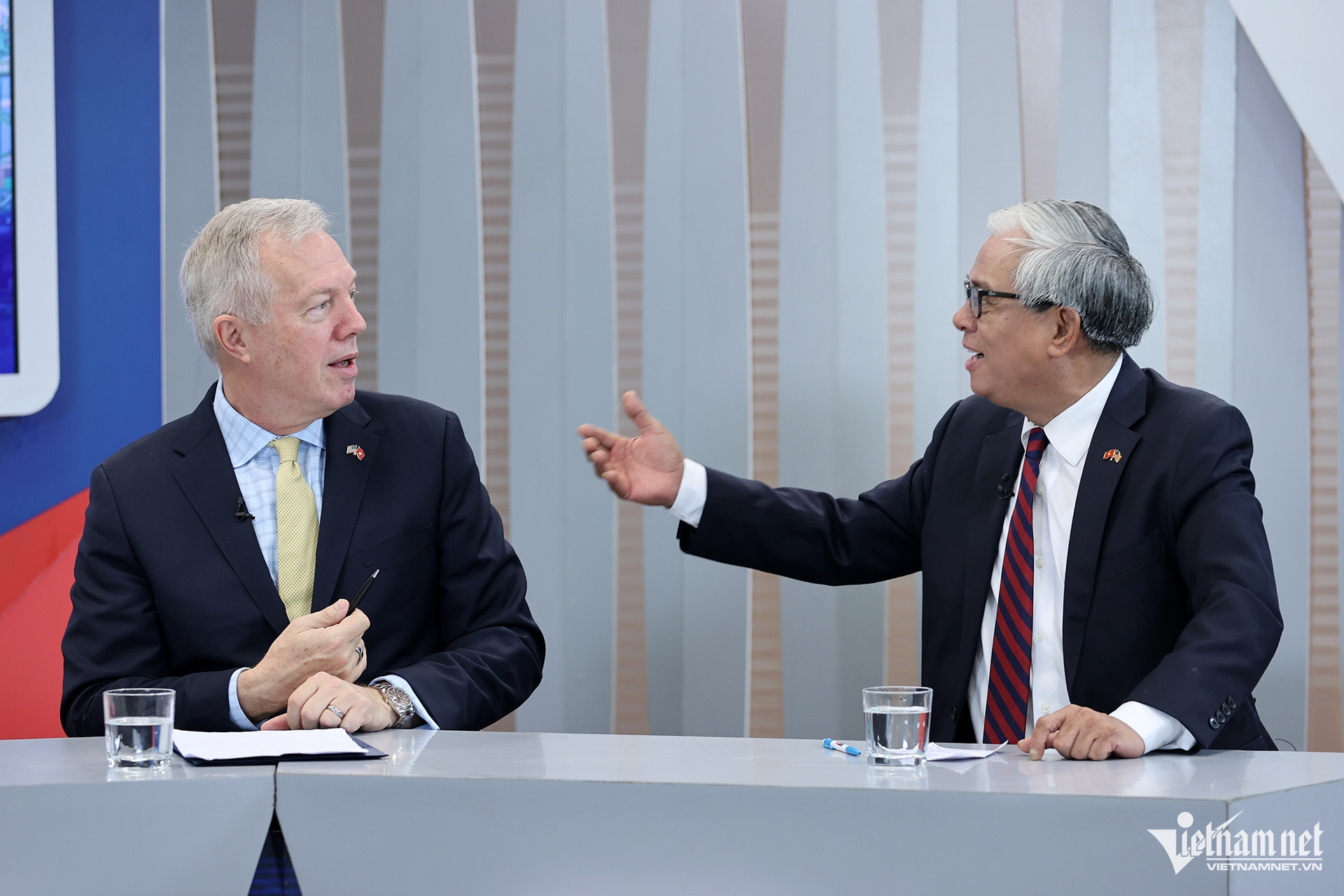
Vietnam’s smart strategy in responding to tariffs
Mr. Ted Osius: I fully agree with my friend, Ambassador Vinh. He described the progression very accurately.
Under Presidents Clinton and George W. Bush, both nations successfully negotiated the Bilateral Trade Agreement, laying the foundation for economic ties. It was signed and ratified in 2002. As Ambassador Vinh noted, tariffs were used prudently to regulate certain sectors.
One example was the dispute over Vietnamese pangasius exports, which delayed congressional approval by six months. Domestic concerns in the US - like Louisiana’s fishing industry hit by Hurricane Katrina - added tension. We resolved this during my ambassadorship.
During President Obama’s term, the relationship was upgraded to a Comprehensive Partnership. No new tariff barriers were imposed; in fact, several non-tariff barriers were removed as we worked on Vietnam’s accession to the Trans-Pacific Partnership (TPP). The goal was to reduce all trade obstacles between Vietnam, the US, and other TPP members.
Unfortunately, the US later withdrew from the TPP under President Trump. But Vietnam continued, joining the CPTPP and later the RCEP - currently the world’s largest trade agreement, though without US participation. That was a loss for the US.
We were all surprised when President Trump recently announced steep reciprocal tariffs: 46% on Vietnam, 49% on Cambodia, 36% on Thailand. These figures were unprecedented. I believe this was a reaction to growing domestic political sentiment in the US that Americans were being harmed by current trade regimes.
What impressed me was Vietnam’s swift response. I met several Vietnamese delegations in Washington. General Secretary To Lam was the first world leader to call President Trump after the April 2 announcement. Deputy Prime Minister Ho Duc Phoc quickly followed with a visit to key US agencies.
This was a smart strategy - acting preemptively instead of waiting. Vietnam maintained this proactive stance in subsequent negotiations and became only the second country, after the UK, to reach a trade and tariff agreement with the US.
Vietnam said, “Let’s find a way forward together,” and proposed many ideas in the talks.
The US-ASEAN Business Council was honored to welcome Minister of Industry and Trade Nguyen Hong Dien and Minister of Agriculture and Environment Do Duc Duy, who signed over USD 3 billion in agricultural contracts. There were also agreements in aviation and green energy - very practical.
I believe this is the right way: realistic, proactive, and cooperative negotiation. I greatly admire how Vietnam has handled this since April 2.
Vietnam is managing an extremely complex situation with great skill
Mr. Daniel Kritenbrink: I fully agree with both ambassadors. To summarize, since the US lifted its trade embargo in the early 1990s and normalized ties in 1995, the goal has been tariff reduction and freer trade.
Following the 1994 embargo lift and the 2001 BTA, Vietnam gained normal trade relations with the US and lower tariffs. This continued with WTO accession in 2007.
This trend held until the first Trump administration, when cautious tariff policies emerged. During my ambassadorship, Vietnam effectively addressed concerns by removing non-tariff barriers, improving market access, and increasing US imports.
Vietnam managed US trade tensions better than most. COVID-19 accelerated the global realization that overreliance on a single supply chain is risky.
Today, under Trump’s second term, many - including Americans - are surprised by the aggressive use of tariffs. But Vietnam has responded decisively and smartly, becoming one of the first countries to secure a framework deal.
We have more work ahead, but Vietnam’s proactive, pragmatic diplomacy has earned tangible results - something both nations can benefit from and should deeply appreciate.
VietNamNet
To be continued...